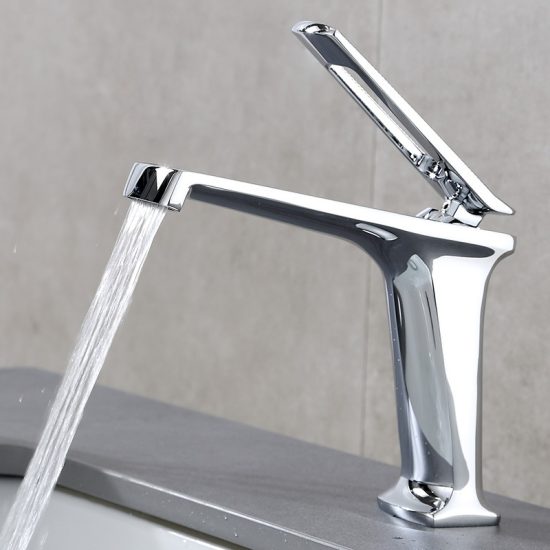If you’re experiencing issues with your basin faucet, troubleshooting common problems can help you identify and potentially resolve the issues. Here are some common basin faucet problems and troubleshooting tips:
- Low Water Pressure:
- Check if the aerator is clogged with debris. Remove the aerator, clean it thoroughly, and reattach it to the faucet.
- Inspect the shut-off valves beneath the sink. Ensure they are fully open to allow maximum water flow.
- Leaking Faucet:
- Tighten any loose connections, such as nuts or bolts, beneath the sink.
- Check the faucet’s O-rings and seals for signs of wear or damage. Replace them if necessary.
- Dripping Faucet:
- A dripping faucet could indicate a worn-out or damaged cartridge or valve. Replace the faulty part based on the faucet model.
- Tighten any loose handles or connections.
- Uneven Water Temperature:
- If you have a single-handle faucet, a fluctuating water temperature may indicate a worn-out cartridge. Replace the cartridge following the manufacturer’s instructions.
- For double-handle faucets, ensure that both handles are properly adjusted to achieve the desired temperature.
- Water Temperature Issues (Too Hot or Too Cold):
- Adjust the temperature-limiting feature, if available. Some faucets have a temperature control feature that allows you to set a maximum temperature to prevent scalding.
- Check the water heater settings to ensure it is delivering water at the desired temperature.
- No Water Flow:
- Confirm that the shut-off valves beneath the sink are fully open.
- Inspect the supply lines for any kinks or blockages. Replace the lines if necessary.
- If you have a touchless or sensor-activated faucet, ensure the sensor is functioning correctly and not obstructed.
- Water Leaking from the Base:
- Loose or damaged mounting nuts may cause water to leak from the base. Tighten or replace the nuts as needed.
- Check for cracks or damage to the faucet body. If the faucet is damaged, it may need to be replaced.
- Continuous Running Water:
- Check for debris or mineral buildup in the faucet’s internal components. Clean or replace any parts as needed.
- Examine the handle and make sure it is properly aligned. Adjust or replace the handle if necessary.
- Strange Noises (Hammering or Whistling):
- Water hammer or whistling sounds may indicate air in the pipes. Bleed the air from the pipes by turning on the faucet and allowing water to flow.
- Install water hammer arrestors to minimize water hammer noises.
- Corrosion or Rust:
- Inspect the faucet for signs of corrosion or rust. Clean the affected areas, and consider replacing any corroded parts.
If you’re unable to resolve the issue through troubleshooting, or if the problem persists, it may be advisable to consult a professional plumber for further assistance. Additionally, refer to the manufacturer’s instructions or contact customer support for guidance specific to your faucet model.


